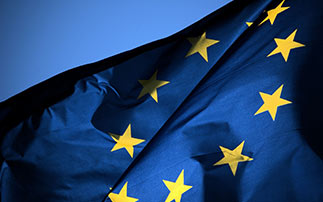What is the LIFE Funding Program?
The Calls for Proposals of the European LIFE Program 2021-2027
LIFE stands for “Financial Instrument for the Environment” created in 1992 by the European Commission. It is the European program dedicated to the environment, nature protection and biodiversity, as well as energy transition. The LIFE program is managed by the CINEA executive agency and comprises two components: one for the environment and one for climate action.
It includes four sub-programs: nature and biodiversity, circular economy and quality of life, mitigation of climate change, and a sub-program for clean energy transition.
For the period 2021-2027, the LIFE program has a budget of 5.4 billion euros at the European level. LIFE funds several types of projects: standard projects (between 3 and 5 million euros), Integrated Strategic Projects (SIP) or Strategic Projects for Nature (SNAP), which are larger scale projects with a two-step submission process. Finally, there are also technical assistance projects, which fund the preparation of SIPs or SNAPs or projects with specific themes.
The beneficiaries of European aid are legal entities that are public bodies (administration, national or local authority…) as well as private entities (small and large businesses, NGOs…). These entities must be members of the European Union or countries associated with the LIFE program.
The main objectives of LIFE projects are:
– Facilitating the transition to sustainable energy, a sustainable, circular, climate-friendly, and resilient economy
– Preserving, rehabilitating, and improving our environment
– Reversing the trend of biodiversity loss and stopping ecosystem degradation by strengthening the management of the Natura 2000 network, thus contributing to promoting sustainable development
– Encouraging and supporting ecological initiatives
Setting up European LIFE Projects
Preparing an application for a LIFE call for proposals requires meticulous preparation and a deep understanding of the lifecycle of a European project:
1. Identification of Objectives and Priorities of funded projects
Before applying for a call for proposals, it is imperative to target the priority areas defined by the LIFE program, such as biodiversity conservation, climate change mitigation, and resource efficiency promotion. For project proponents, it involves better defining their projects with the call for proposals document, informing themselves about eligibility criteria and eligible actions. This ensures a match between the proposed project and the strategic orientations of the LIFE program.
2. Formation of a Strong Consortium
Funded projects can be carried by a single entity or a partnership. In this sense, the LIFE program demands a solid consortium. Project partners must bring complementary expertise, thus strengthening the technical and financial feasibility of the project. There is no limit to the number of partners except for calls funded by the sub-program for clean energy transition and integrated projects.
3. Development of Budget and Action Plan
A precise and realistic budget is essential. The costs associated with the project’s implementation must be clearly defined, accompanied by a financial resource management strategy. A detailed action plan, in line with the deadlines set by LIFE, is also required to demonstrate the project’s viability.
4. Writing and Submitting the Project
The proposal writing must be clear, concise, and in compliance with the requirements of the European Commission. Key elements include the problem description, project objectives, planned activities, expected results, and monitoring indicators. The application deadline must also be respected during submission. Moreover, particular attention should be paid to the justification for the financial aid requested.
Selected innovative projects contribute significantly to environmental preservation, building a more sustainable future, and transitioning to a sustainable economy for future generations.
Participating in a European project can be complex, which is why consultancy firms like Welcomeurope exist to provide the best support for submitting applications for these strategic nature projects. Additionally, National Contact Points (NCPs) are also responsible for conducting information sessions on the program and answering questions from potential LIFE project applicants. In France, this role is fulfilled by the Ministry of Ecological Transition.
The 2023 calls for proposals were published on April 19 on the Funding&Tenders platform. These are annual renewable calls, which is why future project proponents are encouraged to monitor the site from spring 2024 onwards.


